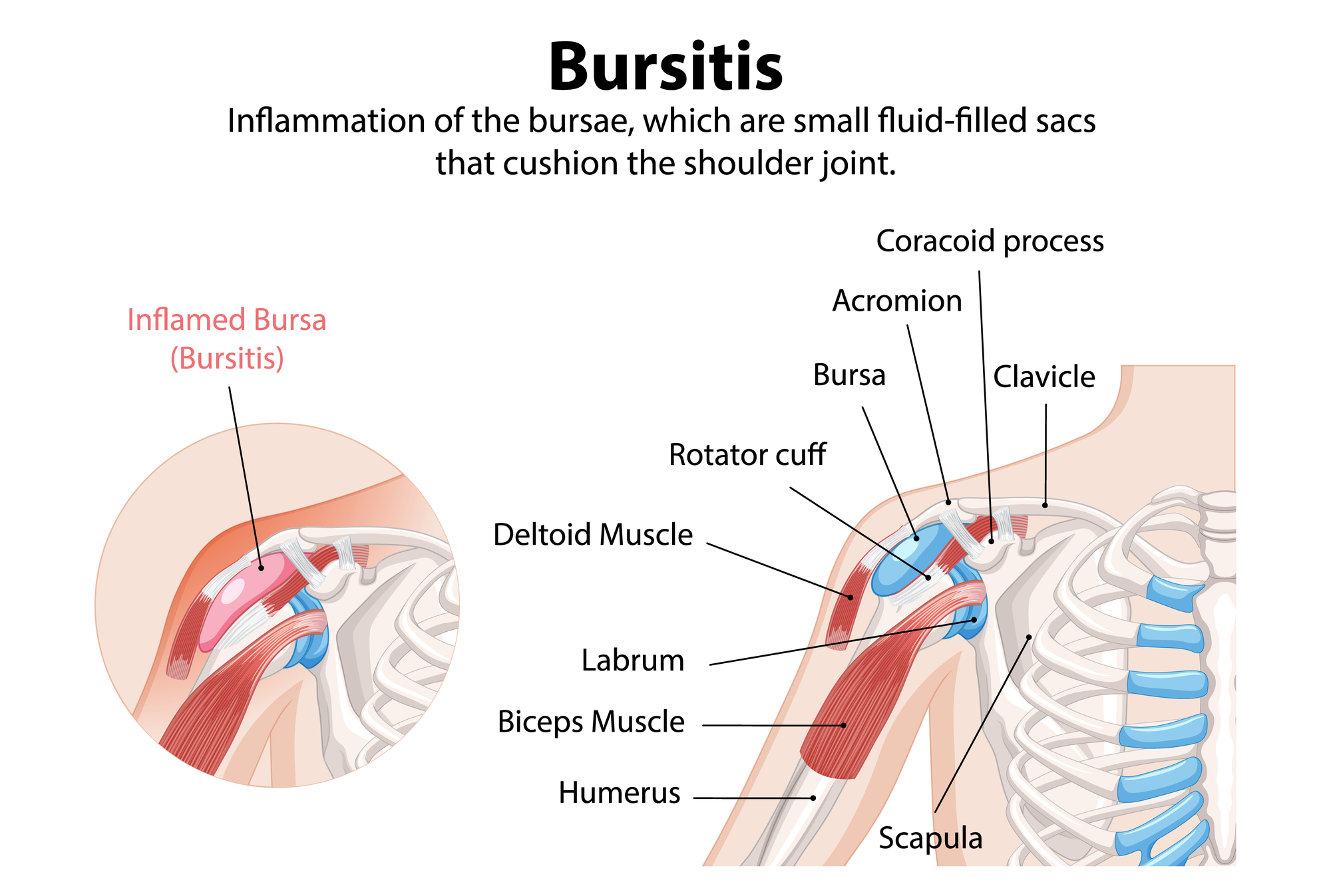Many people deal with a nagging pain in the shoulder. For some, they will get a diagnosis of shoulder bursitis. This is an inflammation of the bursa—a tiny, fluid-filled sac that acts as a cushion between the bones and soft tissues in your shoulder joint. When the bursa gets irritated and swollen, you may have pain, restricted movement and other challenges. Sometimes, the problem is linked to other underlying shoulder issues like rotator cuff tears, arthritis, or bone spurs that rub against the bursa. Tendinitis (inflamed tendons) and bursitis are common causes of shoulder pain, often stemming from overuse.

Deciding on any medical treatment is a big step, and it’s smart to have all the facts. One of the most appealing aspects of Platelet-Rich Plasma (PRP) therapy is that it uses your body’s own healing components, which makes it a very safe option for most people. Because we’re working with a substance that comes directly from you, the risk of an allergic reaction or rejection is virtually eliminated. This approach is all about giving your body a concentrated dose of what it already uses to repair itself.
Who Is a Good Candidate for PRP?
If you’re dealing with shoulder pain despite rest, physical therapy, or pain medication, PRP therapy may be an option. It maybe effective for people with chronic conditions that stem from overuse or minor injuries that haven’t healed properly on their own. This includes issues like rotator cuff tendinopathy, small partial tears in the rotator cuff, persistent bursitis, and shoulder impingement. It may also provide relief for those with a frozen shoulder or early to mid-stage shoulder arthritis.
Other articles
Information on Frozen shoulder – Adhesive capsulitis and Platelet Rich Plasma Therapy






